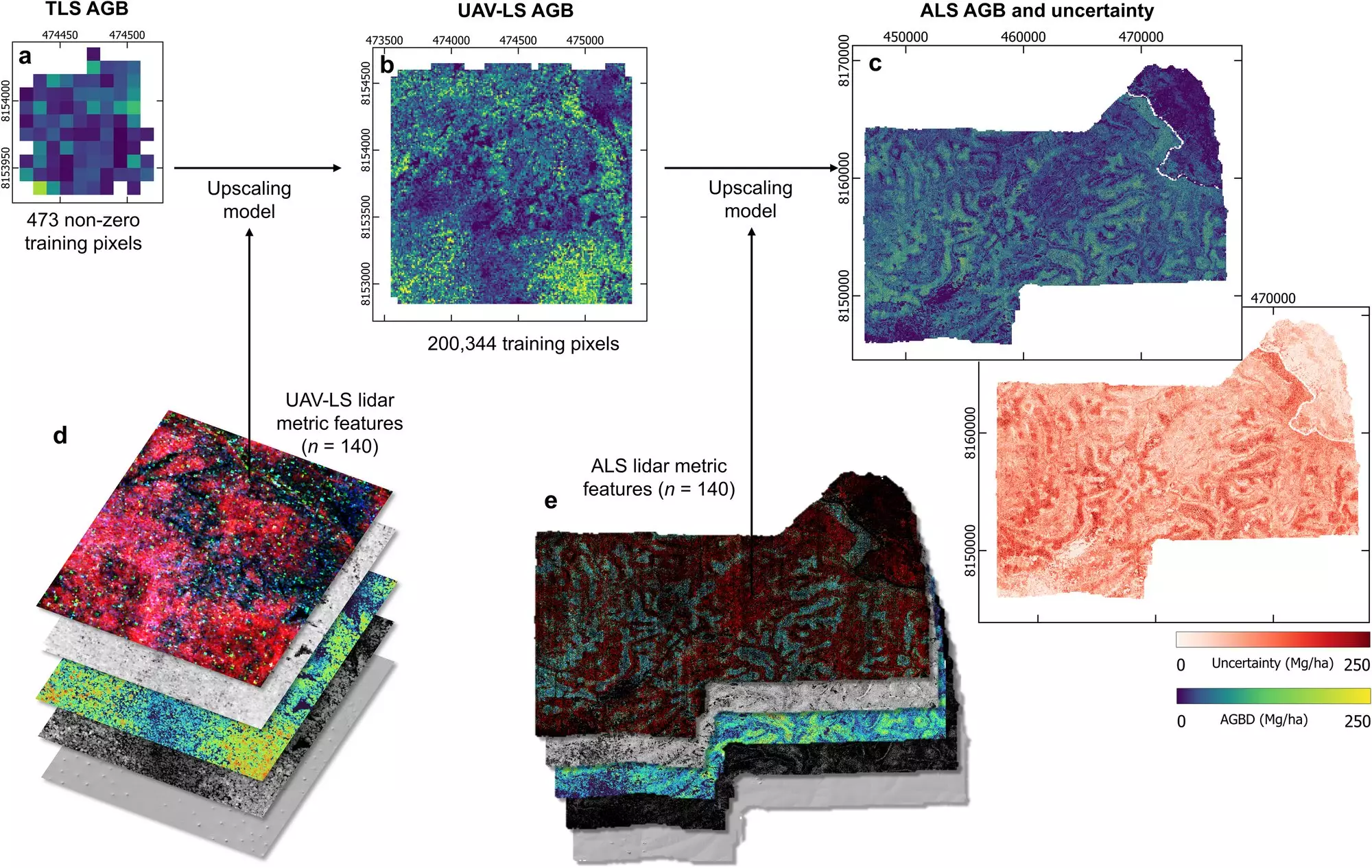Recent groundbreaking research led by an international team including UCL scientists has fundamentally redefined our understanding of the carbon-storage capabilities of miombo woodlands in Mozambique. Utilizing advanced technology, researchers discovered that these ecosystems, historically overlooked in terms of their carbon potential, could store 1.5 to 2.2 times more carbon than previously estimated by conventional methods. This captivating finding not only underscores the importance of these woodlands for climate regulation but also ignites a significant reevaluation of conservation strategies, shifting the narrative on their global ecological value.
The significance of miombo woodlands stretches far beyond carbon sequestration. They are crucial ecosystems that maintain the livelihoods of millions, provide essential habitats for diverse wildlife, and hold invaluable cultural significance for local communities. However, with such a substantial reduction in area over the last four decades—decreasing from 2.7 million to just 1.9 million square kilometers—the urgent need for precise carbon accounting and ongoing monitoring cannot be overstated. The implications of this study extend well beyond academic interest; they represent a critical call to action for protecting these vital carbon sinks.
Transformative Methods for Accurate Measurement
Central to this enlightening study is the methodology employed for data collection. In collaboration with local parties, researchers amassed a staggering 450 billion 3D measurements across over 8 million trees, covering a vast area of 500 square kilometers. This pioneering effort employed ground, drone, and helicopter-based laser scanning techniques, diverging from the traditional allometric methods that have long governed carbon storage estimations.
The innovative use of multi-scale lidar data stands as a testament to modern scientific advancements, allowing researchers to generate region-wide biomass estimates without relying on outdated allometric models. Professor Mat Disney from UCL aptly highlights this paradigm shift, noting that the accuracy gained through these advanced laser scanning technologies profoundly enhances our understanding of miombo woodlands’ essential role in combating climate change.
This methodological advancement carries critical implications, suggesting that past estimates of carbon stocks in miombo woodlands could be grievously understated. The potential carbon storage in these woodlands may be equivalent to 13.6 billion metric tons of CO2, an astonishing figure that necessitates additional scrutiny and validation. By challenging the long-standing assumptions about carbon storage, researchers advocate for a stronger commitment to protect and restore these carbon-rich biomes as part of global climate strategies.
Redefining Economic Value in Conservation
The economic ramifications of this study extend deeply into the world of finance and carbon credits. Formerly, many investors have been hesitant to allocate funds toward preserving and restoring forests due in part to uncertainties in carbon measurement. The staggering findings from this research provide an excellent opportunity to reframe the narrative, positioning miombo woodlands not merely as ecological assets but as vital financial opportunities for climate action.
As Allister Furey, CEO of Sylvera, succinctly puts it, climate change is fundamentally a finance issue. With enhanced confidence in the accuracy of carbon credits derived from miombo woodlands, there lies a promising pathway for increased investment. By demonstrating the true value of these ecosystems, especially as viable carbon storage solutions, clearer financing avenues will emerge. This represents a critical juncture—transforming nature-based solutions from an overlooked sector into a prioritized component of strategic financial investment.
Challenges and Imperatives for the Future
Despite the optimism surrounding these findings, we must also confront the stark realities faced by miombo woodlands. Their rapid decline and continuing threat from deforestation could unleash far greater carbon emissions than previously believed, further exacerbating climate change. Researchers urge immediate action from governments, businesses, and financial institutions to prioritize the protection and restoration of these natural environments.
Future strategies in conservation must leverage the advanced methods showcased in this study, integrate cutting-edge technology, and facilitate international collaboration. The integration of data collected through modern approaches promises to bridge gaps in understanding and transform the economic calculus surrounding carbon trading and forestry investments.
The call to action stemming from this research serves as both a dire warning and a source of hope. By harnessing the rigorous scientific data presented, stakeholders across sectors can work collectively to ensure that miombo woodlands receive the attention they deserve—becoming not merely passive ecosystems but active participants in our global fight against climate change. We must move swiftly to capitalize on this newfound potential, or risk leaving a profound and irreversible impact on our climate future.


Leave a Reply